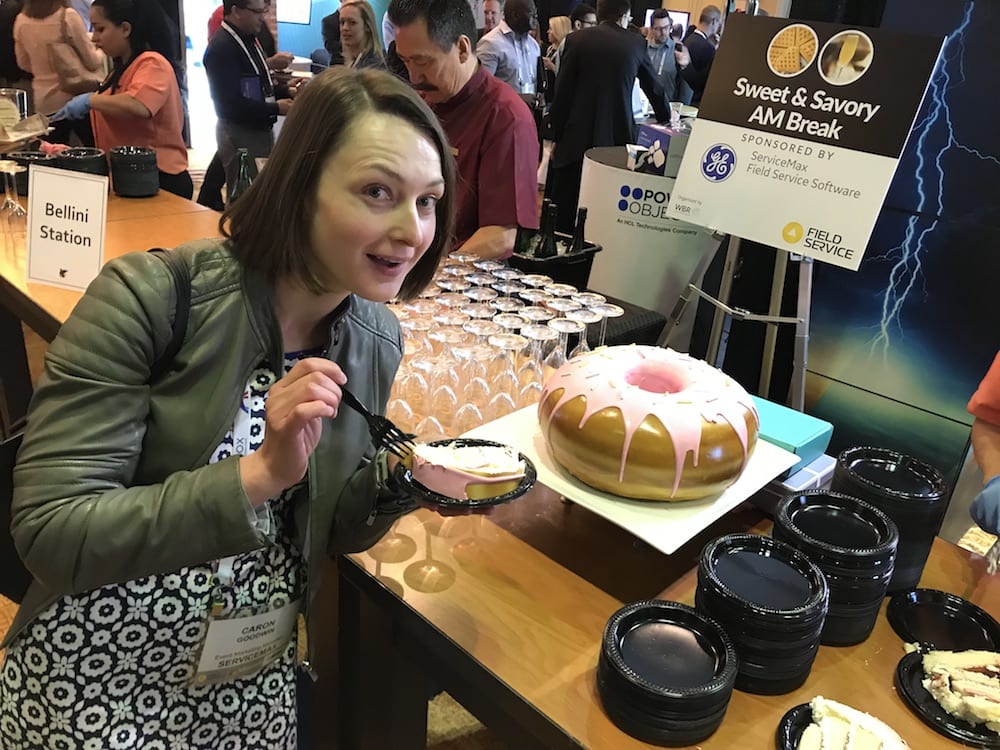In April, I attended my first Field Service USA conference. And for an industry event, it far exceeded my expectations with its jaw-dropping venue, many parties and fabulous speakers. I have to admit field service folks know how to throw a great event!
One of my favorite presentations was “Turning Data into Information You Can Use,” with panelists from Cymer and Southern California Gas Company (SoCalGas), among others. As you may have guessed, the panel discussed how to leverage IoT insights to drive new business models and end-customer value. Both panelists shared how the use of IoT in service changed and elevated their business. For many who are still searching to find repeatable value from IoT, these stories may be of interest.
The first success story comes from Cymer, a provider of ultraviolet light products used in chip manufacturing. The company went from a traditional business model where it used to charge for field service and parts consumed, to now charging its customers by outcomes. It charges by pulse count used to produce microchips — the more chips the company makes, the more it pays to Cymer. Service and part pricing is incorporated in the new model.
With the help of IoT, Cymer is able to track the parts consumed and service timing to maintain the optimal performance and extend the lifetime of its ultraviolet light products. Customers are happy with outcomes-based payment model because it gives them flexibility. Now they can ramp up or slow down production when they need to without having to think how these changes will affect their costs for maintenance personnel and inventory. Cymer takes care of details with the help of IoT analytics. Cymer avoids complicated conversations with customers who only end up paying more when they need more product. At the end of the day, they pay for outcomes.

Anna samples the giant donut during a break sponsored by ServiceMax from GE Digital.
The second success story comes from SoCalGas that wanted to use IoT to identify gas leaks faster. The company used IoT data to find patterns for gas leaks. In the beginning what it thought was a pattern of higher gas usage didn’t always end up being a gas leak. What was going on? When technicians were dispatched on locations to fix the gas leaks, they sometimes found hot water leaks.
With some additional data mining, SoCalGas was able to tell whether its customers were experiencing a water or a gas leak. The speaker highlighted that SoCalGas was successful in identifying new insights because it was open about new ideas from the field (i.e. technicians informed about the pattern of water leaks) and it was able to operationalize new IoT data successfully. Now the company informs its customers effectively and it uses phone calls for water leak alerts to avoid expensive truck rolls. Customers appreciate the efforts and money savings.
You may want to ask what made these IoT projects successful? In both cases companies started out with concrete goals for their IoT implementation, and they mapped out what data and analytics were needed. In case of Cymer, its goal was to use IoT to count and charge customers by equipment usage. In case of SoCalGas, it wanted IoT to help identify gas leakages in customers’ homes. SoCalGas company’s IoT project had an additional benefit and the company was able to act on it because it didn’t incur costs, but side benefits shouldn’t be a big focus when starting an IoT project in your company or they may lead you off track.
Many customers and prospects I speak to ask for examples of successful IoT projects that justify the significant change in processes and investments that IoT technologies entail. Examples like Cymer and SoCalGas show how companies that move to new models deliver an enviable customer experience. It takes a thoughtful strategy, clear focus, company commitment, as well as experienced technology partners to help with execution. But companies are embracing outcome-based strategies and are seeing repeatable results.
To learn more about how ServiceMax delivers great outcomes with Connected Field Service, please visit www.servicemax.com


Share this: